This story features the city's most abundant views from the late Soviet era. It is in these settings that the ordinary, everyday life of Yoshkar-Ola takes place.
We will start our walk from Victory Park. This park is located a little away from the city center, and there are already residential high-rise buildings and the private sector.
The park itself was relatively recently brought into a decent condition.

The park is located on a former cemetery where soldiers who died in the hospital located here were buried during the war. Today, in addition to the monument to home front workers shown in the previous frame, several guns and a tank are installed here.
A Yoshkar-Ola resident is dozing on a bench in Victory Park. Apparently, he went overboard with celebrating May Day the day before.
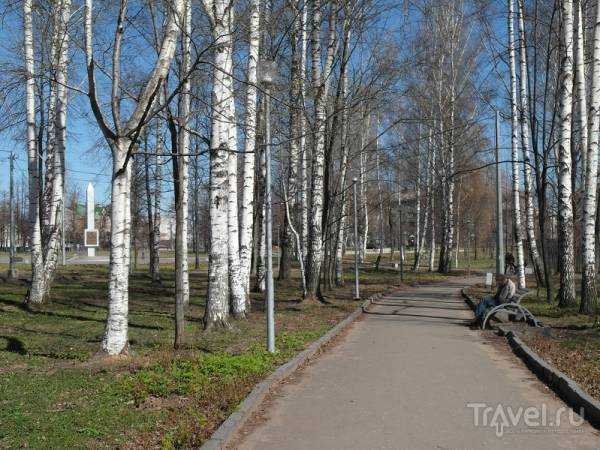
In early May, Yoshkar-Ola surprised with some terrible amount of dust and sand everywhere. Despite the fact that it was quite warm outside, it was impossible to sleep with the window open - the next morning the windowsill was covered with sand. After walking around the city, the sand crunched on your teeth. And the most unpleasant thing - sand in your eyes with the slightest breath of wind. It is difficult to say what is the reason for this phenomenon. Perhaps it is because the city is surrounded by pine forests, perhaps because of the late melting of snow that year. Locals claimed that this is not usually the case for them, and this phenomenon is not typical for Yoshkar-Ola. But in recent photos from another city in the republic, I clearly saw the same layer of sand as here:
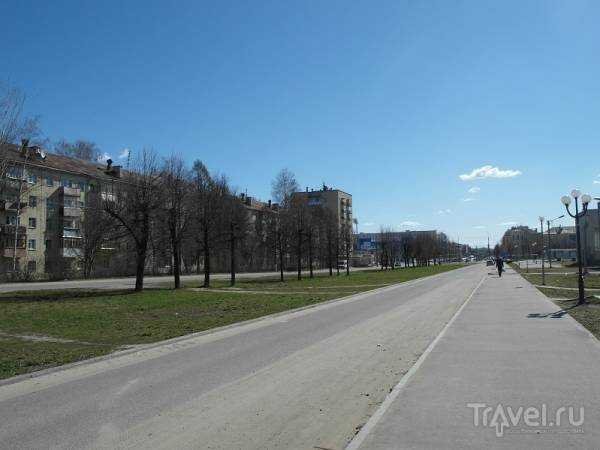
Behind the park is the large Victory Square, on which is the Lenin Palace of Culture, built in 1977 as the Palace of Culture of the Mari Machine-Building Plant:
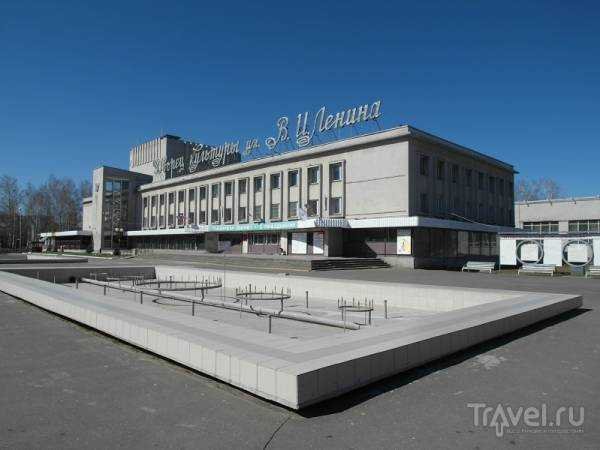
After Victory Square, the long Victory Boulevard begins, which will eventually lead us to the central Park of Culture and Recreation and the new Yoshkar-Ola quarter shown in the first part.

The entire length of Pobedy Boulevard has been renovated and brought into line with modern walking and tourist requirements. Closer to the newly built center, the space becomes more crowded: there are many sculptures, fountains, and points of sale with all sorts of Chinese toys and balloons.
At the far end of the boulevard from which we are walking, there is nothing left except paving slabs, benches and a couple of fountains:

The houses along the boulevard, by the way, show the stages of the city's development. In the far part there are obvious barracks (I will show them in the next part, in accordance with the chosen concept). In the middle there are Soviet high-rise buildings. Closer to the end, buildings from the Russian period begin to appear.
Somewhere in the middle of the boulevard there are several tents with souvenirs, including those with a Mari theme.
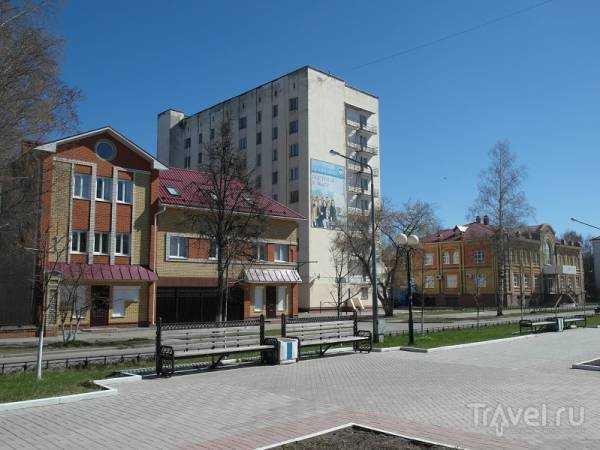
The Mari seemed to be one of the most recognizable and characteristic small peoples of Russia. Sometimes it is much easier to confuse Tatars with Russians than Mari. Despite the fact that there is a significant percentage of Russians in the city, the “nationality” of the republic is very well felt here, unlike, for example, Mordovia or Karelia.

Somewhere halfway from the Victory Park to the new center, the boulevard is interrupted by the Yoshkar-Ola Central Park of Culture and Leisure. After it, Victory Boulevard becomes Chavain Boulevard. The park is clean and well-kept, cozy, cheerful and crowded. It was in the park, and not in the new center, that local residents spent their time during the May holidays.
We are greeted by a monument to military glory from 1973. On the monument is a figure of a victorious warrior:

Before the war, there was a cemetery and a forestry here. Then, an arboretum was created in their place. In June 1941, the city was preparing for festive events dedicated to the twentieth anniversary of the MASSR. On this occasion, the Park of Culture and Recreation was to be opened, the opening date was scheduled for June 22. But on June 22, the Great Patriotic War began, and the park was opened only in 1948.
Behind the monument is an eternal flame, at which a guard of honor is posted:

In the Central Park of Culture and Leisure (also known as the 30th Anniversary of the Komsomol Park), in addition to the eternal flame and the monument to military glory, there are also monuments to the Afghan and Chechen wars, a monument to the Chernobyl victims, a monument to those killed in local wars, and a tree of memory to the defenders of the fatherland.
The last one was planted in 1995 for the 50th anniversary of the Victory, but died because its trunk split in two, and during frosts ice formed between the trunks, breaking the tree. A new one was planted in its place, but we somehow didn’t see it either:
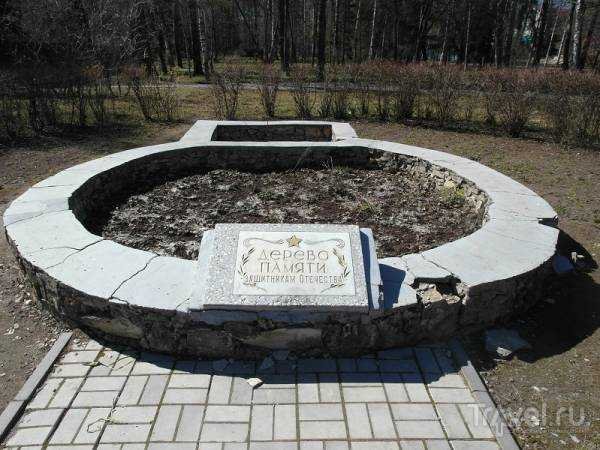
The Mari (aka Cheremis) are a Finno-Ugric people, amazingly original and unlike any other. Suffice it to say that after the capture of Kazan and the annexation of the Kazan Khanate to the Russian state, the Mari, unlike the Tatars, who only helped them, resisted for another 30 years. This resistance resulted in fairly bloody wars, called the Cheremis wars. It was precisely to strengthen the territory during these wars that Tsarevokokshaisk, which became today's Yoshkar-Ola, was founded. Ultimately, the uprising was pacified not so much by military force as by generous gifts and promises, although a lot of blood was shed.
Beyond the Central Park of Culture and Leisure, the boulevard, which changed its name from Pobeda to Chavaina, becomes more crowded, inhabited and rich:
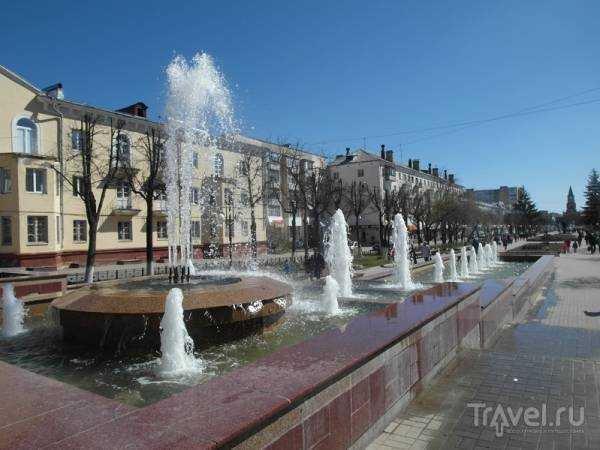
Another peculiarity of the Mari is their religion. It is believed that some of them officially adopted Orthodoxy. However, the traditional Mari religion still has many adherents. It is rather polytheistic, based on Mari mythology, but modified under the influence of polytheism. The Mari religion is based on faith in the forces of nature, which should be honored and respected. Prayers are held in special places - sacred groves, closed to outsiders. This is not some kind of ostentatious exoticism. There are still many of them in today's Mari El, and they are used for their intended purpose. You cannot cut down trees, smoke, swear, or lie in them.
This was the very sight that made my companions rub their eyes in bewilderment: the Spasskaya Tower of the Moscow Kremlin loomed on the horizon:

Even if some Mari are formally Orthodox, the national faith has become firmly entrenched in the Mari way of life. In principle, the Mari national religion has all the signs of paganism, including animal sacrifices, and many call it paganism, but the Mari themselves do not like it.
You must admit that there is nothing similar among other Finno-Ugric or neighboring Turkic peoples. In 2011, the central theme of the issue of the travel magazine "GEO" was the Mari faith. The issue was published with the title on the cover "The Last Pagans of Europe".
Inventive name for a computer store:

The Mari, like the Mordvins, are divided into two groups - mountain and meadow. The mountain live mainly on the right bank of the Volga, where the center is the city of Kozmodemyansk. The meadow make up the majority and live in the Volga-Vyatka interfluve.
A monument to one of the most famous Mari people – the founder of Mari literature, poet and playwright Sergei Chavain on the boulevard named after him:

The Mari people's special attitude to nature comes from religion. When you are in the Mari outback, you are surprised how such a poor and sparsely populated republic manages to take such good care of nature. There is no garbage along the roads, the forests and rivers are clean, and white lichens are everywhere, testifying to the extreme purity of the Mari air. Nature is the second reason to visit Mari El.
Along the boulevard, in close proximity to the new center, shops, cafes, restaurants and entertainment venues are appearing. Some are only just under construction:

There are at least three natural attractions in Mari El that are worth seeing – the Green Key on Klenovaya Gora, Lake Morskoy Glaz and the lakes of the Mari Chodra Nature Reserve. More about them in Part 4.
Already in the "new" Yoshkar-Ola, opposite the Bruges embankment and the "Spasskaya" tower, there is a renovated building of the Academic Russian Drama Theatre named after G. Konstantinov. The theatre has been operating in Yoshkar-Ola since 1919. It was named after the theatre's main director, who led it for 30 years. In 1993, the theatre initiated the creation of the International Association of Russian Theatres with headquarters in Yoshkar-Ola. Since then, 4 festivals of Russian theatres have been held here:
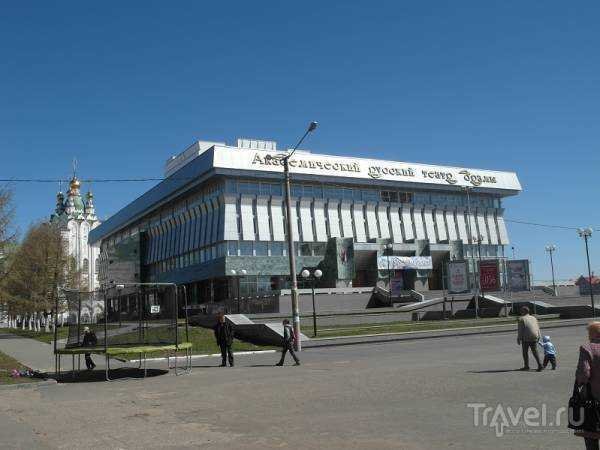
At the southern end of the Bruges embankment, behind Kokshaga, an outpatient and polyclinic complex is being built, which, apparently, will become another building in the series of the "new" Yoshkar-Ola. To the left of it is probably the most famous and most interesting building of the post-Stalin era in question - the so-called "Cologne". It is also the tallest building in the city. The name was obviously given due to its resemblance to a familiar bottle of Soviet cologne from childhood. The house itself is residential, built in the 80s, completed in 1992. The "roof" was supposed to house the "Seventh Heaven" restaurant, apparently by analogy with the Ostankino TV tower. However, when the house was being completed, a certain group of people broke into the premises and smashed the cafe. There was not enough money to restore it, and the premises were given over, apparently, to offices. Probably, the pogrom had precisely this purpose.

We entered Mari El from the Nizhny Novgorod region, via the new bridge across the Vetluga. Thus, before getting to Yoshkar-Ola, we drove almost 300 kilometers across the entire republic. In addition to the good road and stunning nature, we were surprised by the complete absence of cars. Somewhere 50 kilometers before the turnoff to Kozmodemyansk, we encountered only 2-3 cars.
In the first part I showed the houses of the Bruges embankment "from the rear", but not what is located behind them. I am correcting this. In this shot the line of houses of the embankment is behind the back. The fence and lanterns belong to their ensemble. The wavy roof on the left side of the frame is the indoor athletics arena with a football field under construction. The opening is planned for December 2015:
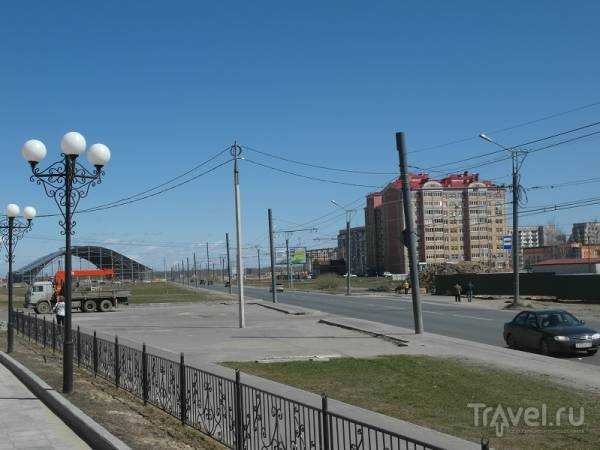
They say that banditry is quite widespread in the Mari outback, and it is better not to drive around the republic at night. I don't know how true this is. Fortunately, it passed us by, although we drove the last 200 km to Yoshkar-Ola in the dark.
There. Behind me is the Bruges embankment. It turned out to be a shot in the style of a famous top blogger who takes photos of similar things all over the country:
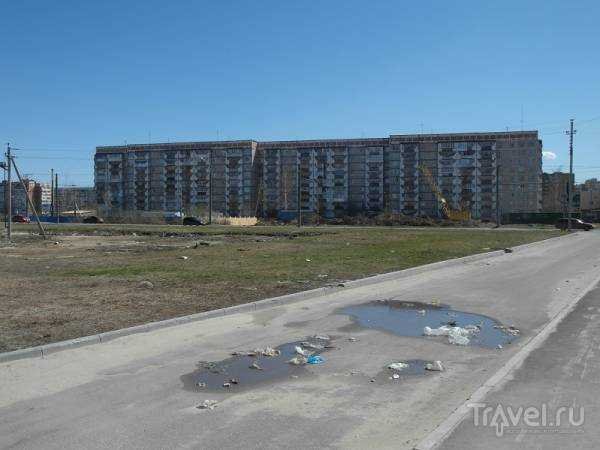
Source: travel.ru
